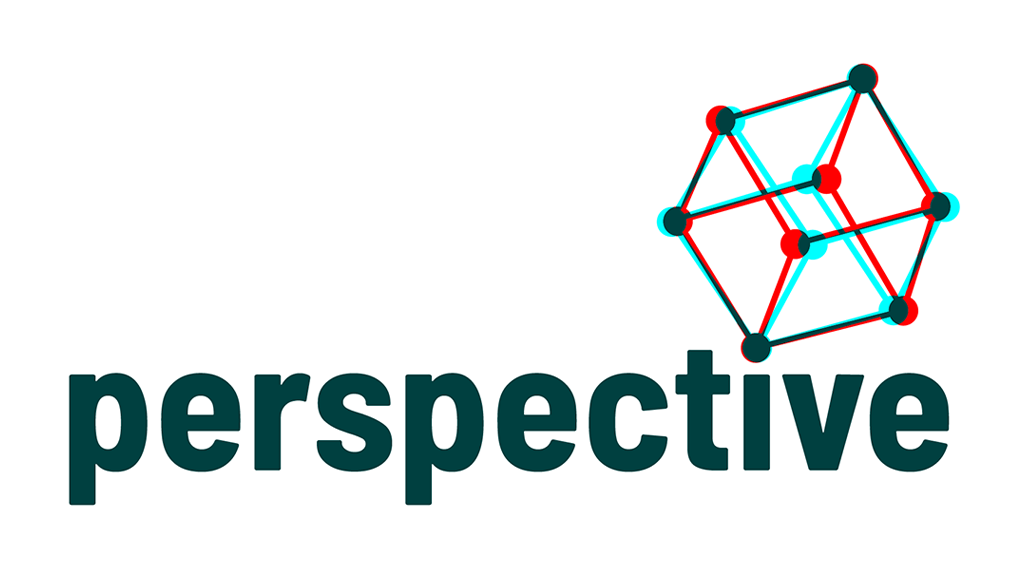Developing a concept from a doodle on a post-it note is a great way to challenge yourself to be creative and to improve your ability to visualise things in 3D. When you scribble an idea down on a scrap piece of paper or the edge of a notepad make sure you keep it! Pin it up near your desk and let that idea develop with more sketches, and sometimes a better fleshed out design will emerge. Offshore and subsea engineering projects demonstrate how incredible challenges can be overcome, often with thinking outside the box, so you shouldn’t let convention hold you back when it comes to being creative.
Post-it note ideas
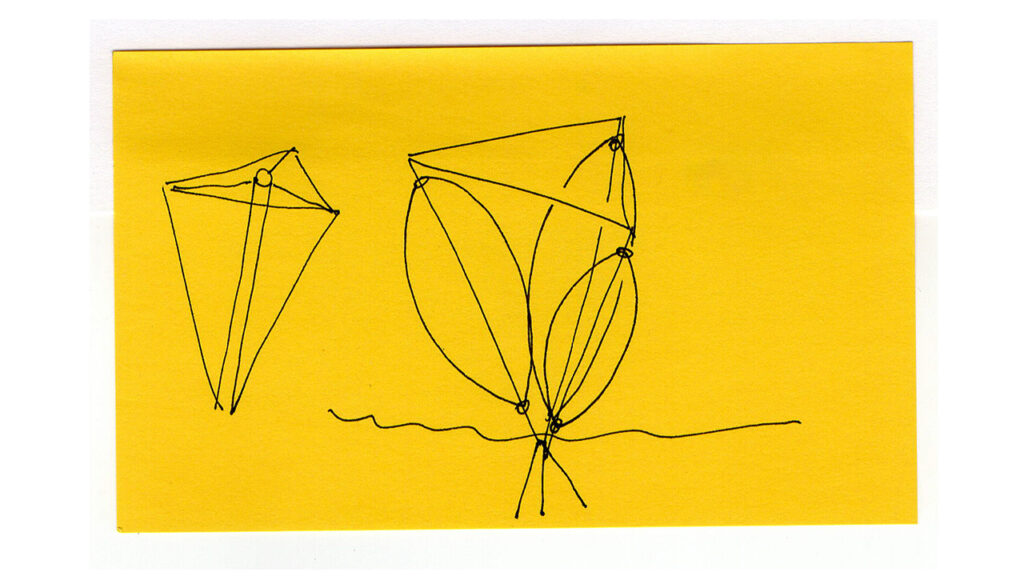
The central idea was for a vertical axis wind turbine, utilising more than one rotor and blade assembly, to form a nabla type structure. Essentially turning the design up side down and allowing for three rotors with tilted axes and a triangular frame. Following the initial scribble, more emerge and help develop the concept and how it might look.
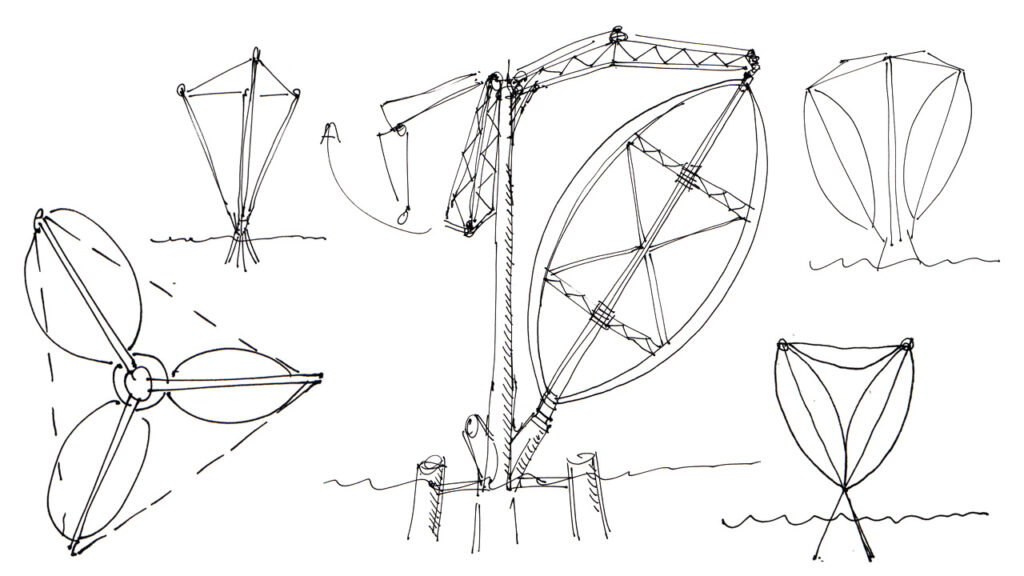
What become apparent was to include some lattice boom crane elements supporting large Darrieus rotors forming an organic inverted pyramid structure. Not suitable or plausible? That is not the focus when developing ‘disruptive’ ideas, the focus is on creativity and doing something different that may then lead to more innovative ideas at a later date.
The challenge as a 3D modeller is to take primitive pen sketches such as these and to flesh out a CAD model that at least functions in terms of geometry and form without the limitations of constructability and structural integrity.
3D mock-up
Moving to 3ds Max the general form is created quickly, to scale, to help establish overall sizes and how parts may interact. Simple shapes and splines are used to generate the various elements which allows fast iteration and adjustment without being bogged down in intricate design and detailed fitting.
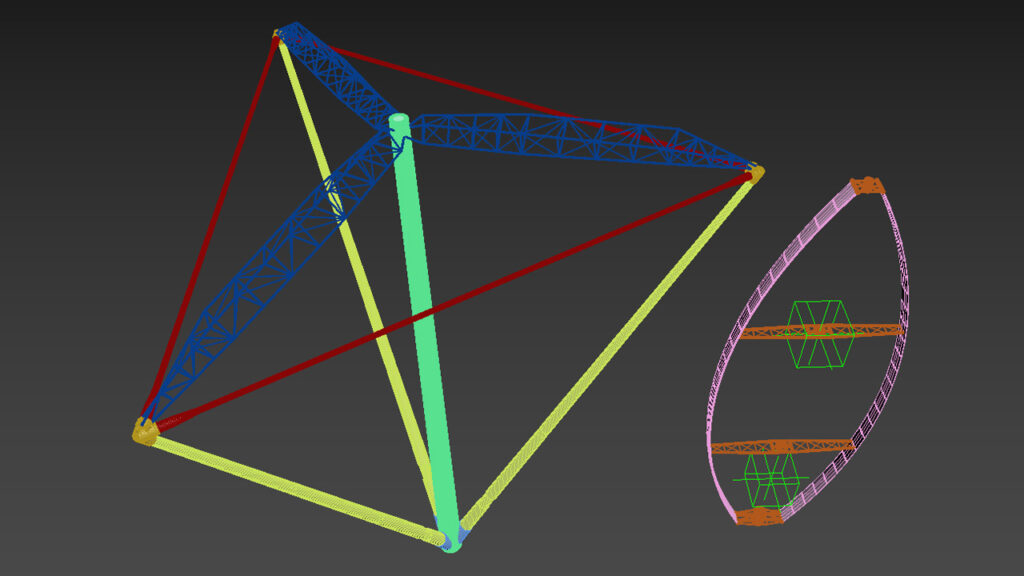
At this stage no parts move or are linked, there are no pivots set or connections made, instead the various shapes are roughed out to build a framework that can be adjusted or replaced as necessary. As the model develops, issues are solved to allow for a complete design to operate in a 3D space (if not the real world) with the size of the central column set to offer a large scale turbine concept. Floating offshore wind turbines, conventional horizontal axis designs, are increasing in size and therefore energy output and efficiency, so this concept design is modelled to match this scale which then becomes apparent in the views rendered alongside vessels.
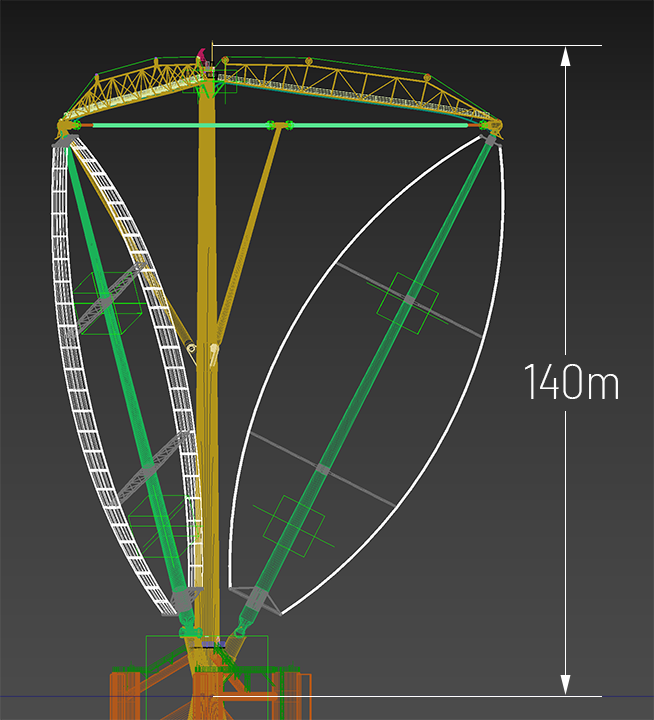
The design, complete to a stage suitable for general visualisation, incorporates crane-like functionality built in to the actual tower and three connection points for rotors aligned with a ’tilt’ off from vertical. It is intended to be a visually striking design unlike existing (commercial and constructable) floating offshore wind turbines.
The purpose of this small project is to demonstrate how simple sketches on paper can be transformed into high quality presentation material and to also highlight how disruptive thinking can challenge existing designs which may lead to novel ideas.
Final build and rendering
With a complete model (still a low-detail concept) an overall sequence of events can be animated to help show operation and assembly.
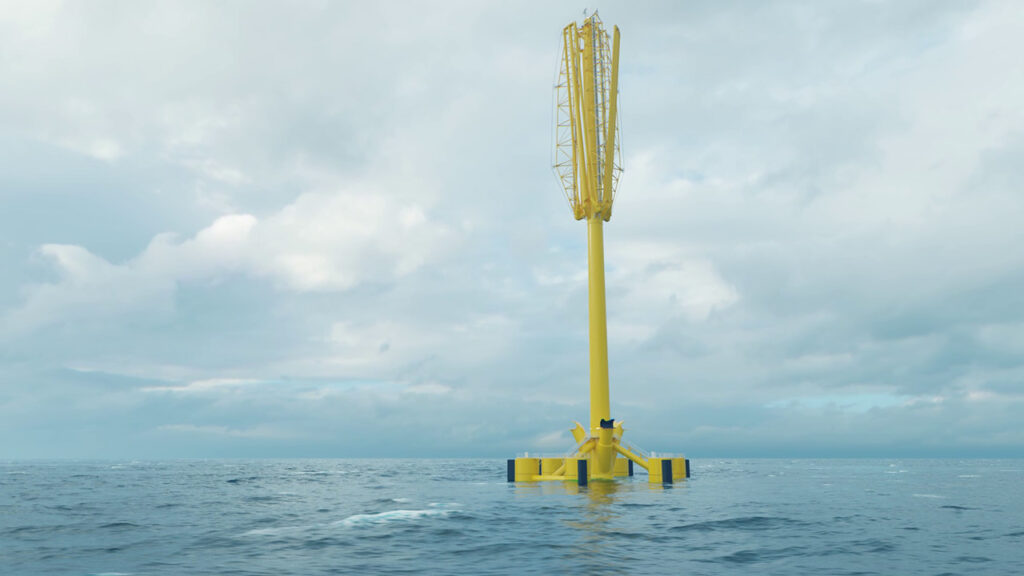
Depicted in an ocean environment the turbine is placed in position out in the field. With some animation added to the model, the three booms or arms can be set to function with their unfolding mechanism via some hierarchical linking and LookAt Targets within 3ds Max. This is achieved without spending time on the exact functionality and involves solving issues as you work to get the concept operating for visual purposes only.
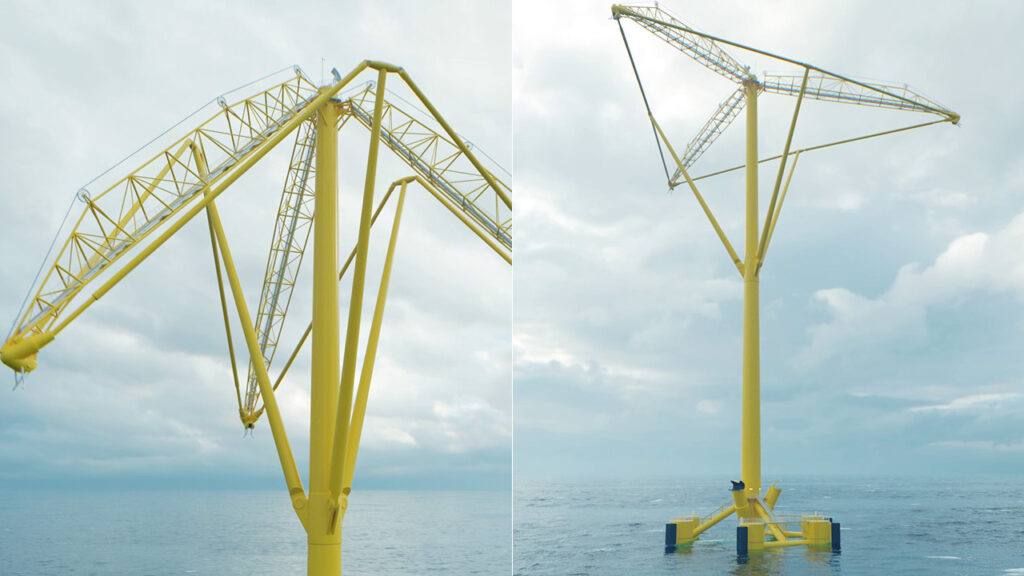
Other assets such as vessels and in this case a barge model can be brought into the sequence to help indicate how the rotor blades would be brought to the turbine and installed in-field, utilising pull in winches and pivoting connections. Again, the engineering of this is not the point of the exercise, it is only intended to be used as a ‘disruptive thinking’ piece and it is presented as an example in how early stage concepts can be promoted.
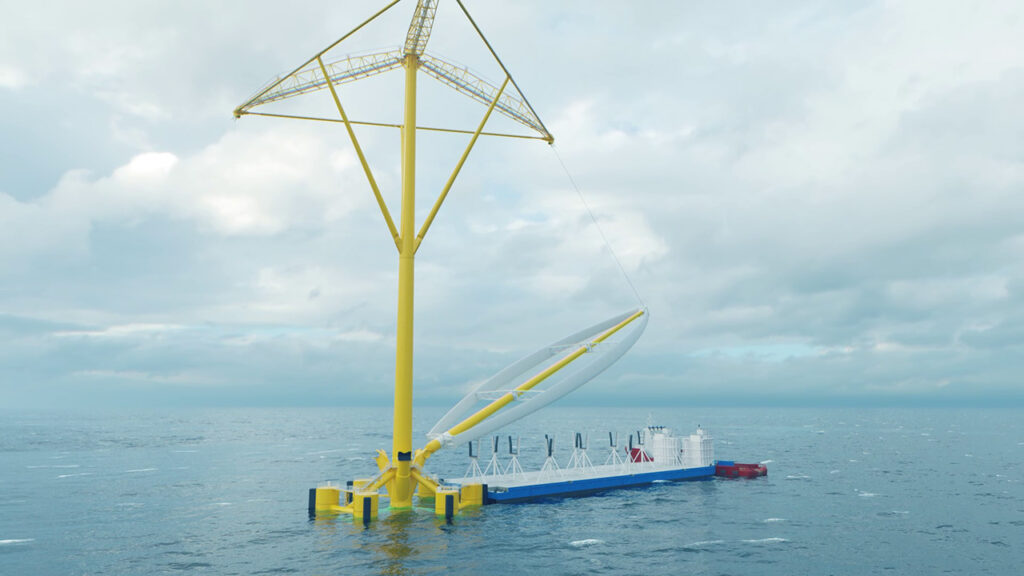
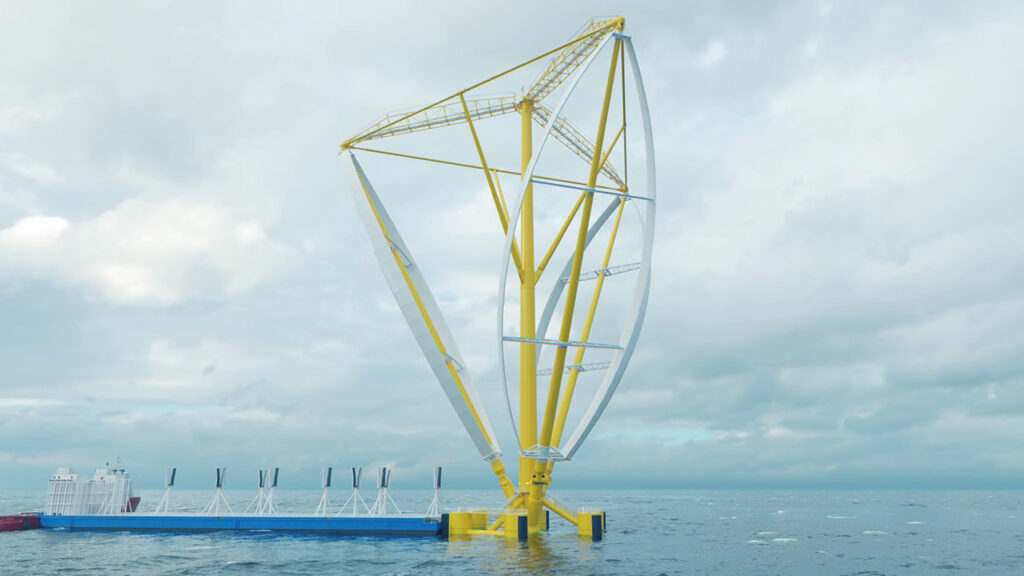
With all three blade assemblies in place the completed structure is in keeping with the original doodle but transformed into something far more convincing as a visual. The wider field array is then also shown to help indicate the scale of the (fictional) offshore wind farm and a video generated for use in presentations or social media.
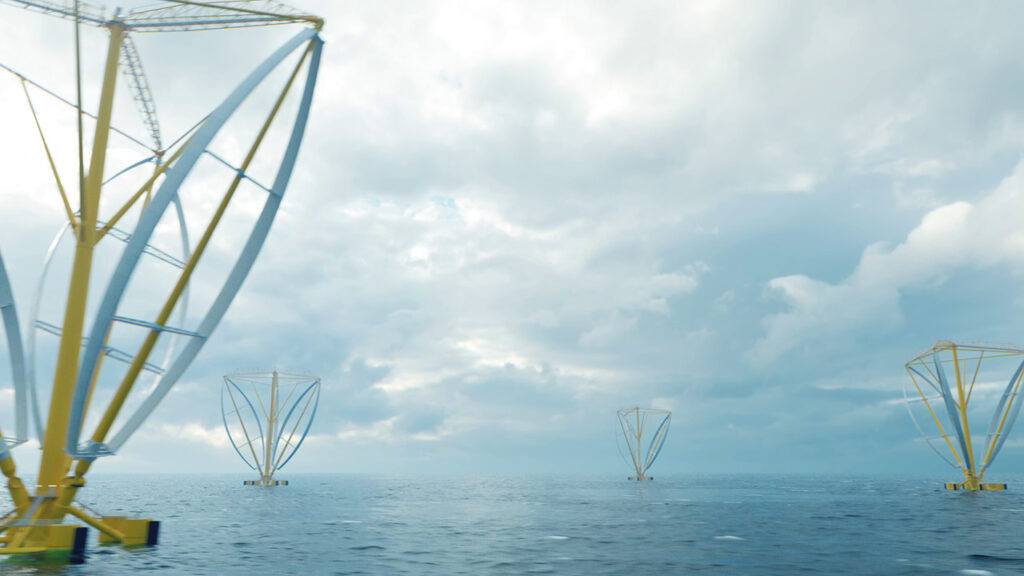
Conclusion
Hopefully this process of mocking-up a concept design has helped explain how ideas can move from paper to 3D in relatively easy steps and the potential that animation brings for promoting discussion and further development of those ideas. Disruptive thinking concepts are especially suited to being developed this way making use of simplistic modelling and rapid virtual prototyping. Ideas can then come to life with little in the way of source information other than a few lines doodled on a post-it note.
